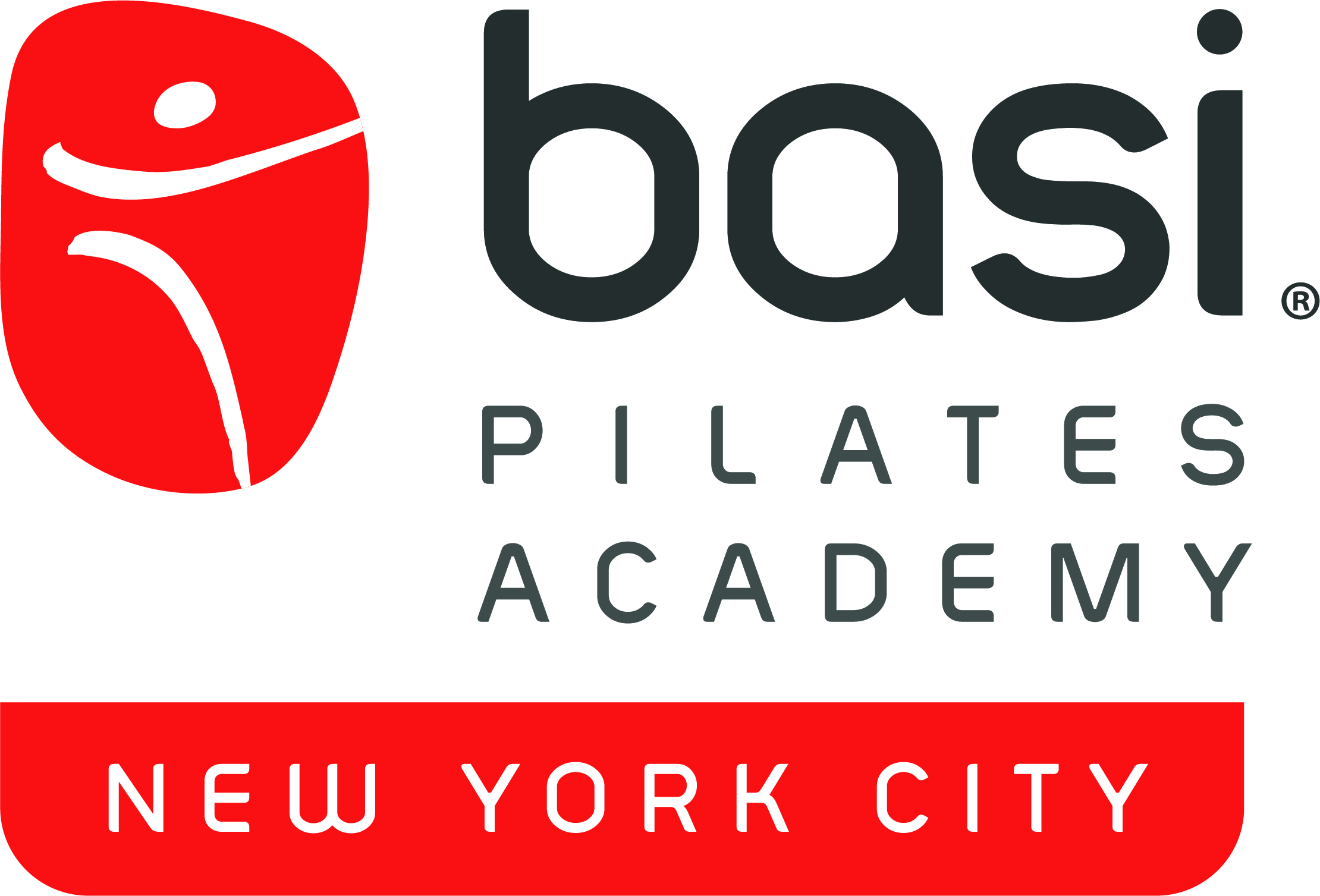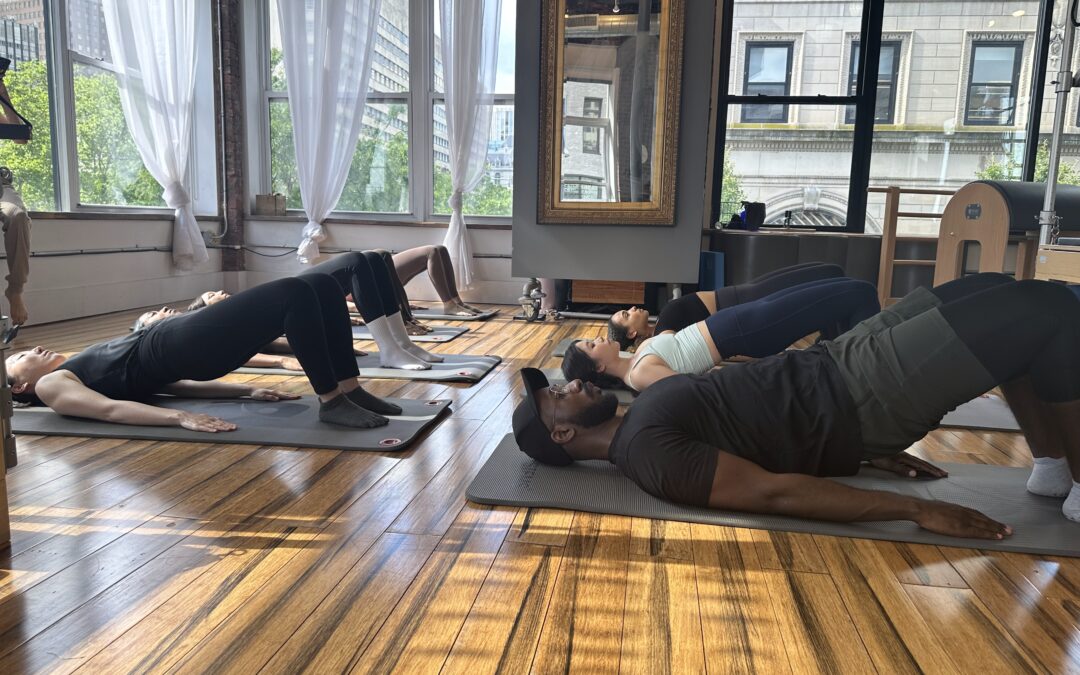Walk into any gym in Brooklyn, and you’ll hear it: “Engage your core!” “Feel the burn in your abs!” “Plank for stronger core!” But after years of teaching and studying movement at BASI Pilates Academy NYC, I can tell you that most people—including many fitness professionals—fundamentally misunderstand what core strength actually means.
The six-pack obsession has hijacked our understanding of true core function. And this misconception isn’t just limiting your progress—it might be setting you up for injury and movement dysfunction.
What Most People Think “Core” Means (And Why They’re Wrong)
When most people hear “core strength,” they picture defined abdominals, endless crunches, and that burning sensation that supposedly signals progress. This surface-level understanding focuses almost entirely on the rectus abdominis—the “six-pack” muscle that runs vertically along the front of your torso.
But here’s what I’ve learned from working with students and patients at our clinic: the rectus abdominis is actually one of the least important muscles for true core stability. It’s like judging a building’s structural integrity by looking only at its facade.
I’ve worked with countless people who could do 100 sit-ups but couldn’t lift a grocery bag without wincing. They had developed what I call “show muscles” while completely neglecting their body’s actual support system.
The Real Core: Your Body’s Internal Architecture
True core strength comes from a coordinated system of deep stabilizing muscles that most people can’t even feel, let alone consciously control. Think of these muscles as your body’s internal scaffolding—always working, rarely noticed, absolutely essential.
The key players include:
The Diaphragm: Your primary breathing muscle, which creates the “roof” of your core cylinder and directly influences spinal stability through intra-abdominal pressure regulation.
The Pelvic Floor: A hammock of muscles spanning the bottom of your pelvis, providing the “floor” of your core cylinder and supporting your pelvic organs while contributing to spinal stability.
The Transverse Abdominis (TVA): The deepest abdominal muscle, wrapping around your torso like a natural corset. Research shows the TVA activates before any limb movement in healthy individuals—it’s your body’s anticipatory stability system.
The Multifidus: Small, deep muscles along your spine that provide segmental stability between individual vertebrae. These muscles often shut down after back injury and don’t automatically reactivate without specific retraining.
These muscles work together as an integrated unit. When one fails to do its job, the others compensate, creating patterns that can lead to pain, dysfunction, and that “tight” feeling people often try to stretch away.
The Science Behind Deep Core Function
Recent research in motor control has revolutionized our understanding of core function. Studies have demonstrated that in healthy individuals, the transverse abdominis and multifidus activate automatically before any arm or leg movement—sometimes by as much as 100 milliseconds before the prime mover muscles.
This anticipatory activation creates what biomechanists call “proximal stability for distal mobility”—a stable center that allows your arms and legs to move powerfully and efficiently. Without this automatic core activation, your body creates stability through compensation patterns, often involving excessive muscle tension in areas like your neck, shoulders, or lower back.
In clinical settings, real-time ultrasound imaging can show people their deep core muscles in action. The “aha” moment when someone finally feels their transverse abdominis gently draw in—not sucking in their belly, not bracing their breath—is profound. Suddenly, they understand the difference between forcing and facilitating.
Why Traditional Ab Training Fails (And Sometimes Hurts)
The fitness industry’s obsession with superficial core training creates several problems:
Breathing Dysfunction: Crunches, planks held to exhaustion, and “ab burner” classes often encourage breath-holding and rib flaring. This teaches your nervous system to create stability through bracing rather than through coordinated deep muscle activation.
Postural Compensation: Overemphasizing anterior (front) core muscles without addressing posterior (back) stabilizers creates imbalances that can worsen forward head posture and increase lower back stress.
Loss of Natural Timing: The nervous system learns that core activation comes from conscious effort rather than automatic anticipatory control. This disrupts the natural timing patterns essential for efficient movement.
Neglect of Three-Dimensional Function: Most traditional core exercises occur in a single plane of movement, usually flexion. But real life—and optimal core function—requires stability through rotation, side-bending, and combined movements.
I’ve seen clients who could hold a five-minute plank but couldn’t maintain neutral spine alignment when reaching overhead or rotating their torso. Their training had taught them to create rigidity, not intelligent stability.
The BASI Approach: Intelligent Core Integration
At BASI Pilates Academy NYC, we approach core training through what founder Rael Isacowitz calls “movement intelligence.” This means understanding not just which muscles to use, but when, how much, and in coordination with what other systems.
Our BASI Block System™ integrates core training into every exercise, not as an add-on, but as the foundation from which all movement emerges. Here’s how this differs from traditional approaches:
Breath-Initiated Activation: Every movement begins with an exhale that gently activates the deep core system. We teach clients to feel the subtle drawing together of the deep abdominal muscles without gripping or breath-holding.
Progressive Loading: We start with basic stability challenges and gradually add complexity, resistance, and dynamic elements. A client might begin by maintaining neutral spine while breathing, progress to adding small arm movements, then advance to full-body coordination challenges.
Functional Integration: Rather than isolating core muscles, we train them in relationship to real-life movement demands. Exercises like the BASI Pilates “Hundred” simultaneously challenge breathing coordination, postural endurance, and deep core activation.
Postural Integration: Every exercise addresses the relationship between core function and optimal spinal alignment. We constantly cue the connection between deep abdominal engagement and lengthening through the crown of the head.
What Proper Deep Core Activation Feels Like
One of the most common questions I get is: “How do I know if I’m doing it right?” True deep core activation is subtle—it should never feel forced or create tension in your neck, jaw, or shoulders.
Here’s what to look for:
Gentle Inward Movement: A soft drawing of the lower abdominals toward the spine, about 30% of your maximum effort. Think of gently hugging a baby rather than wrestling a bear.
Maintained Breathing: You should be able to breathe normally while maintaining core engagement. If you’re holding your breath, you’re working too hard or using the wrong muscles.
Pelvic Floor Connection: A subtle lifting sensation through the pelvic floor, as if you were gently stopping the flow of urine. This should coordinate naturally with abdominal engagement.
Spinal Length: A sense of growing taller through the crown of your head while the deep core gently supports from within.
Sustained Without Fatigue: Proper deep core activation can be maintained for extended periods without muscle fatigue, unlike superficial ab exercises.
In our Brooklyn studio, I often use the image of a gentle internal corset that adjusts its support based on movement demands—tightening slightly for challenging positions, releasing for rest, but always maintaining some baseline activation.
The Ripple Effect of True Core Function
When clients develop authentic core strength at BASI NYC, the benefits extend far beyond their Pilates practice:
Improved Breathing: With a more functional diaphragm and coordinated core system, breathing becomes deeper and more efficient, supporting both physical performance and stress management.
Better Posture: Natural spinal alignment becomes effortless rather than something you have to constantly think about maintaining.
Enhanced Athletic Performance: Whether you’re a weekend warrior or training for the NYC Marathon, improved core function translates to more efficient movement patterns and reduced injury risk.
Reduced Pain: Many clients find that chronic neck, shoulder, and lower back discomfort diminishes as their core system learns to provide appropriate spinal support.
Greater Body Awareness: Developing sensitivity to deep muscle activation enhances overall proprioception—your ability to sense your body’s position and movement in space.
One client told me: “I spent years thinking I needed stronger abs. It turned out I needed smarter abs. Now I can work for hours without pain because my core is actually supporting me instead of just looking good.”
Beyond the Studio: Living with Intelligent Core Function
The ultimate goal isn’t to have strong core muscles just during Pilates class—it’s to have a core system that automatically supports you throughout daily life. This requires what we call “functional integration.”
Sitting Intelligence: Rather than constantly switching between slumping and military posture, you develop the ability to sit with gentle core support that can be maintained without fatigue.
Walking Efficiency: Your gait becomes more coordinated as your core provides a stable platform for your arms and legs to move from.
Lifting Mechanics: Whether picking up groceries or playing with children, you automatically engage appropriate core support before movement begins.
Stress Resilience: Because the diaphragm and core system are intimately connected to your nervous system’s stress response, improved core function often correlates with better stress management.
Common Misconceptions I Address Daily
After years of teaching, certain myths about core strength persist:
“I should feel my abs burning”: Deep core work is about endurance and coordination, not muscle fatigue. Burning usually indicates you’re using superficial muscles or working too hard.
“Stronger abs will fix my back pain”: Back pain is complex and multifactorial. Sometimes people with back pain need more core support, sometimes they need less tension and more mobility.
“I need to suck in my belly”: This common cue actually opposes healthy core function by elevating the ribcage and disrupting breathing patterns.
“Planks are the best core exercise”: Planks can be valuable when performed correctly, but they’re just one tool in a comprehensive core training toolkit.
“I can strengthen my core with 10 minutes of daily exercises”: True core integration requires consistent attention to movement quality throughout all activities, not just during designated exercise time.
The BASI Difference: Education Over Entertainment
What sets BASI Pilates Academy NYC apart in the crowded fitness landscape is our commitment to education over entertainment. We don’t promise six-pack abs in six weeks or core strength through exhausting workouts.
Instead, we offer something more valuable: a deep understanding of how your body actually works, and the movement skills to support your health for decades to come.
Our instructors complete comprehensive training covering anatomy, biomechanics, motor learning, and the art of teaching movement. This depth of preparation allows us to meet each client’s unique needs rather than applying one-size-fits-all programming.
Whether you’re brand new to movement or a seasoned athlete, we meet you where you are and help you develop the intelligent core function that will serve you in all aspects of life.
Ready to Discover Your True Core?
If you’re tired of superficial ab workouts that leave you feeling tight, frustrated, or stuck in the same patterns, we invite you to experience the BASI approach to core training. Through private sessions or small group classes at our Brooklyn location, you’ll learn to feel and use your deep stabilizing system in ways that create lasting change.
Your core is not just about how you look—it’s about how you move, breathe, and feel in your body every day. Let us show you the difference between working harder and working smarter.
Book your initial consultation at BASI Pilates Academy NYC today, and start building the intelligent core strength that will support you for life.
Lynda Salerno Gehrman is the owner and founder of BASI Pilates Academy NYC (formerly Physio Logic Pilates & Movement), which she established in 2006. She holds a BA in Dance Performance/Composition and has been a Pilates student for over 20 years and teacher for 18+ years, beginning her Pilates journey at age 15. Lynda studied under esteemed European Pilates teacher Alan Herdman in London and earned her first certificate from Stott Pilates. She now serves as assistant faculty for BASI Pilates Teacher Training and has been teaching dance since age 15. Lynda also served as dance director and choreographer for the World and European Scholar Athlete Games for 13 years and continues her dance studies in NYC.

